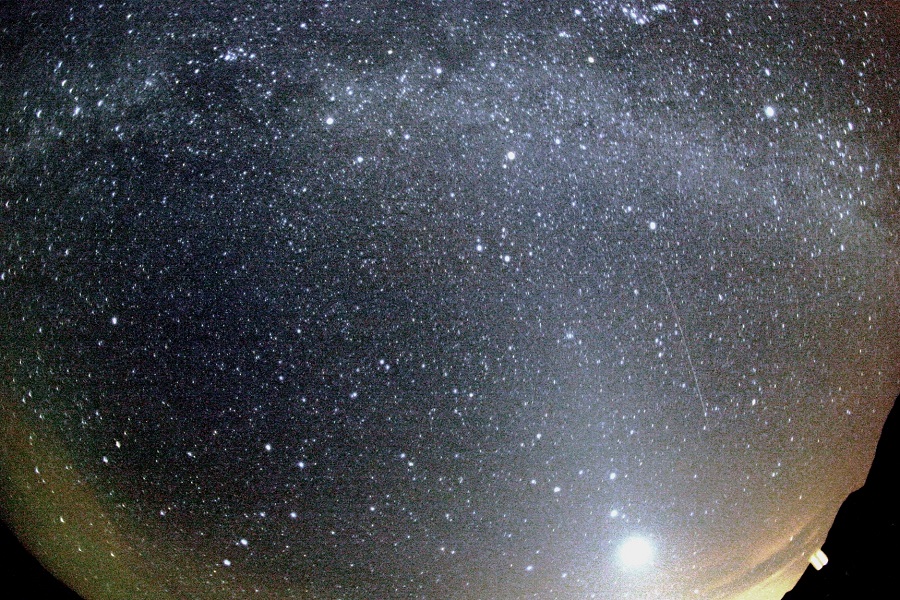
Just days after Uranus is putting on a great show in the night sky, the Orionids are arriving, filling clear skies with shooting stars to the delight of star gazers. The Orionids are so-called because the point they appear to come from, called the radiant, lies in the constellation Orion, but they can be seen over a large area of the sky. The Orionids are actually the remnants of Halley’s Comet. Halley’s Comet is a short-period comet visible on Earth every 75 years or so; it is the only known short-period comet that is regularly visible to the naked eye from Earth and the only naked-eye comet that might appear twice in a human lifetime. Halley was last visible in 1986 and should appear again in 2061. While Halley’s Comet visits the night sky infrequently over someone’s lifetime, the Orionids themselves are an annual event, typically visible for a week in late October every year.
This year, the peak of the Orionids arrives this weekend. In some years, meteors can streak across the night sky at rates of 50-70 per hour. This year, experts believe there will be a dozen or two per hour.
No matter where you are on the Earth, you can catch the Orionids anywhere in the night sky. The best time to do so is a few hours before dawn (and after 2am when the moon will have set). Look toward Orion’s belt, made up of the stars Alnitak, Alnilam, and Mintaka. They’ll be radiating north of Betelgeuse, the star that makes Orion’s left shoulder.
The meteor shower will peak this weekend in the early morning hours between Friday, October 20 and Sunday, October 22.